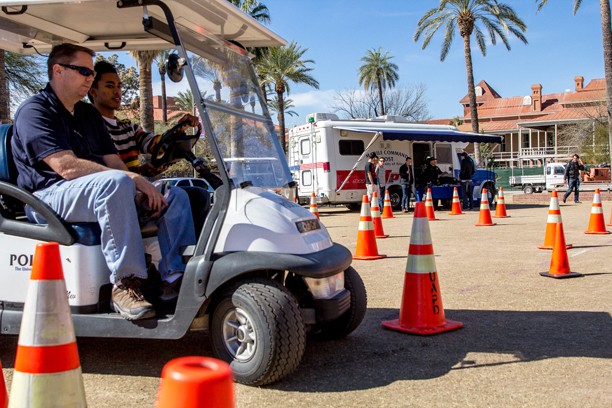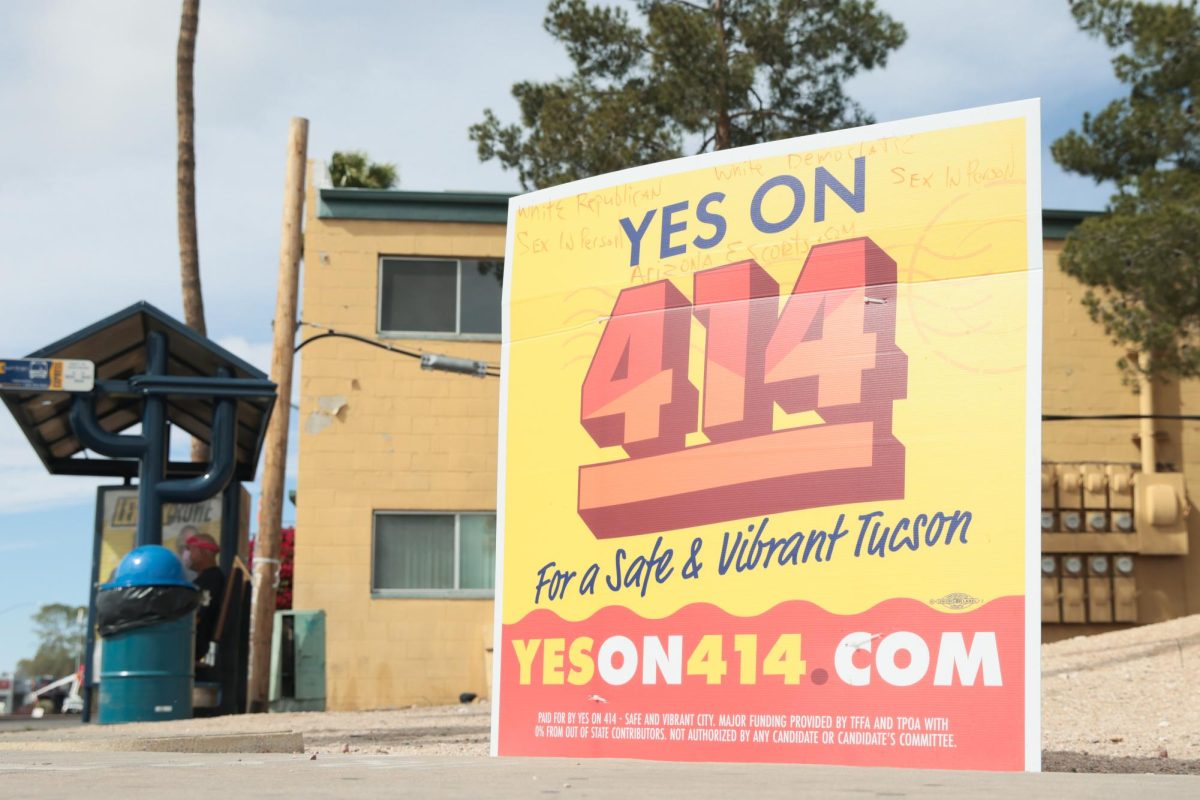The annual Spring Break Safety Fair returned to campus on Wednesday, providing students with vital information as they prepare to depart for spring break.
The University of Arizona Police Department and the Associated Students of the University of Arizona partnered for this event, which included food, freebies, an alcohol screening and an obstacle course.
The obstacle course was a driving course on the UA Mall that was set up with orange cones and designed to demonstrate impaired driving. Students were first instructed to drive a golf cart through the course under normal conditions, then asked to do it again while wearing “fatal-vision” goggles.
The goggles blur the vision of the person wearing them and make some areas look magnified. They can also interfere with depth perception, as well as the ability to focus, according to Joe Bermudez, a crime prevention officer at UAPD.
“It’s as realistic as we can make it, but it’s not identical to driving impaired,” said Sergeant Juan Alvarez, public information officer at UAPD. “This is a much safer setting … but it comes pretty close.”
The obstacle course attracted a steady stream of students, who waited in line for their turn to drive the golf cart while wearing the vision-impairing goggles.
“I couldn’t tell if I was in the middle or to the side … the cones looked closer than they were,” said Stephanie Mejia, an English sophomore.
Campus Health Service also focused on alcohol awareness by distributing an alcohol screening survey to help students assess their risk regarding alcohol use.
“A lot of students … are low risk,” said Lynn Reyes, an alcohol and substance abuse counselor at Campus Health. “But for those who are in the higher levels, we can have a conversation with them about that, how to lower their risk.”
To encourage students to take the survey, Campus Health provided students with incentives like freebies, cookies and a raffle.
“I think it’s pretty cool to see how your drinking can affect how you behave, how you could possibly behave and just to see how your actions can affect others,” said Zach Wik, a business freshman who participated in the alcohol screening.
A lot of students seemed eager to find out how they compared to the average college student, though many already had an idea of where they stood, according to Spencer Gorin, a health educator for Health Promotion and Preventative Services at Campus Health. One third of students at the UA do not even drink, he said.
“It seems like it’s really the 20 percent of students who are doing 80 percent of the drinking,” he added.
In addition to information about safety when using alcohol, the fair also provided students with vital information for staying safe in the sun, staying hydrated and traveling.
The University of Arizona Medical Center had a booth to inform students about the dangers of drinking while participating in water activities, such as boating or swimming.
“We want them to enjoy their spring break, but we want them to do so safely,” Bermudez said.
For students who plan to travel for the upcoming break, Bermudez advised they be aware of their surroundings, travel in groups and know the emergency contacts for the area they will be traveling to.








